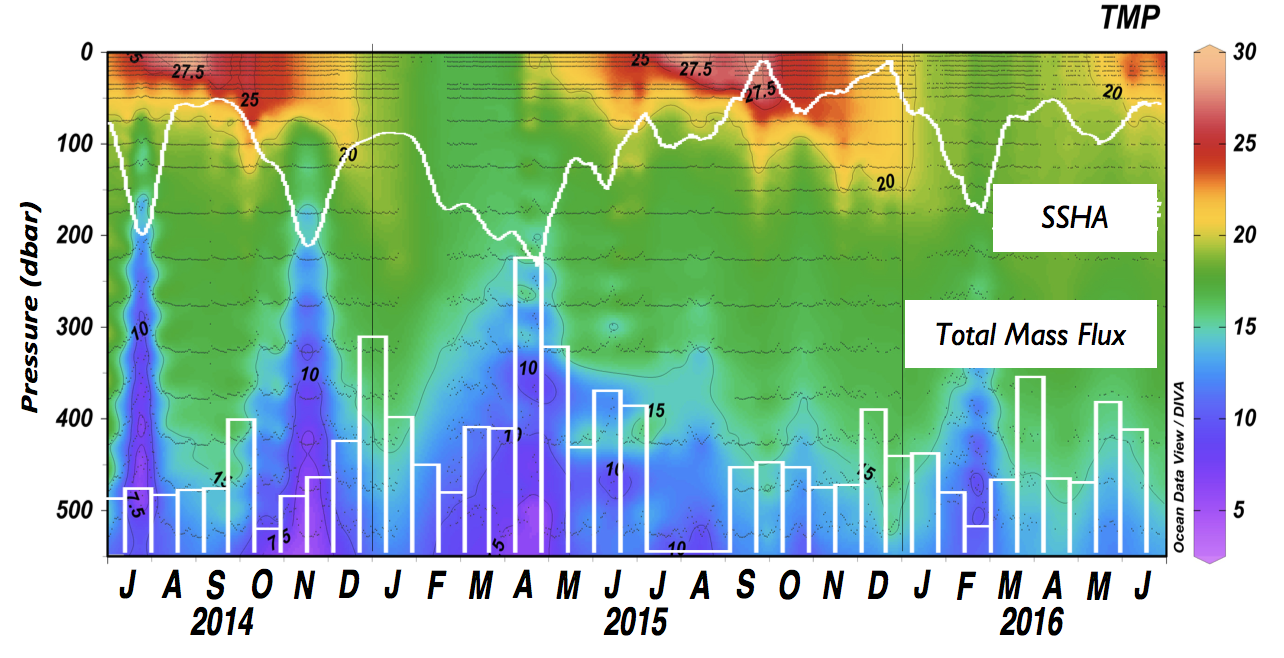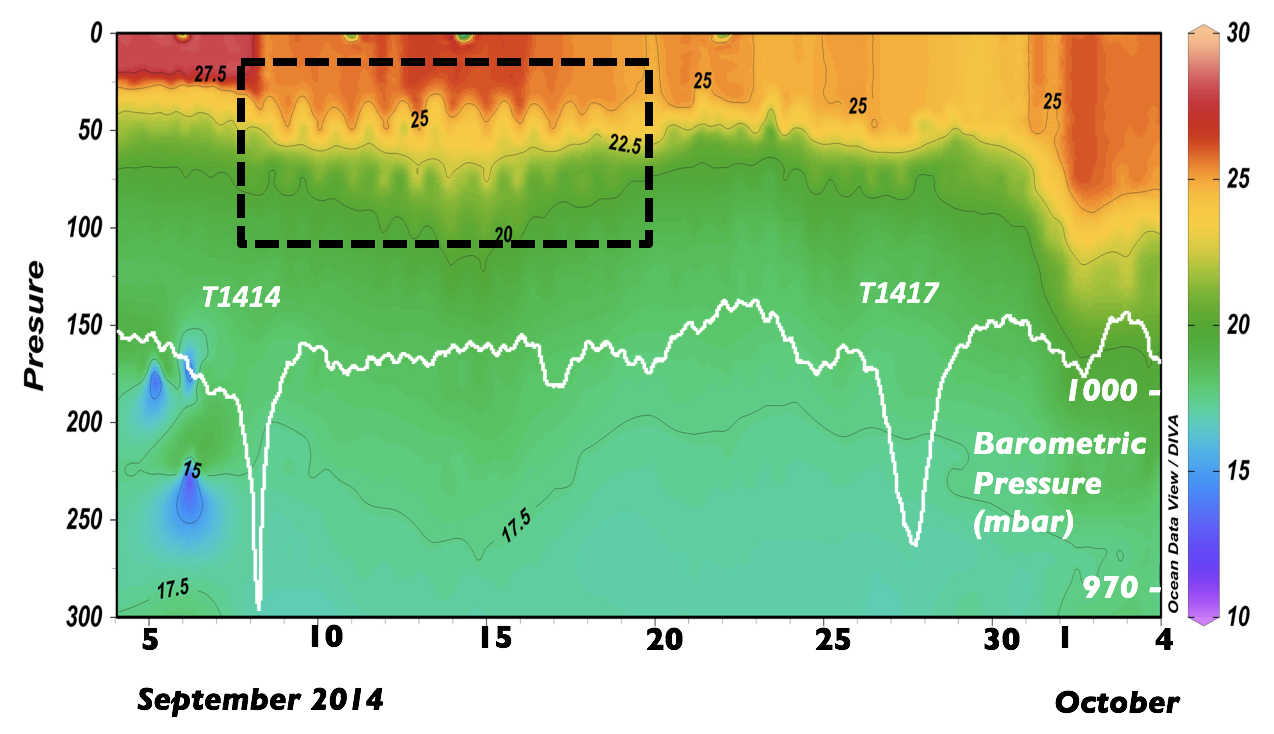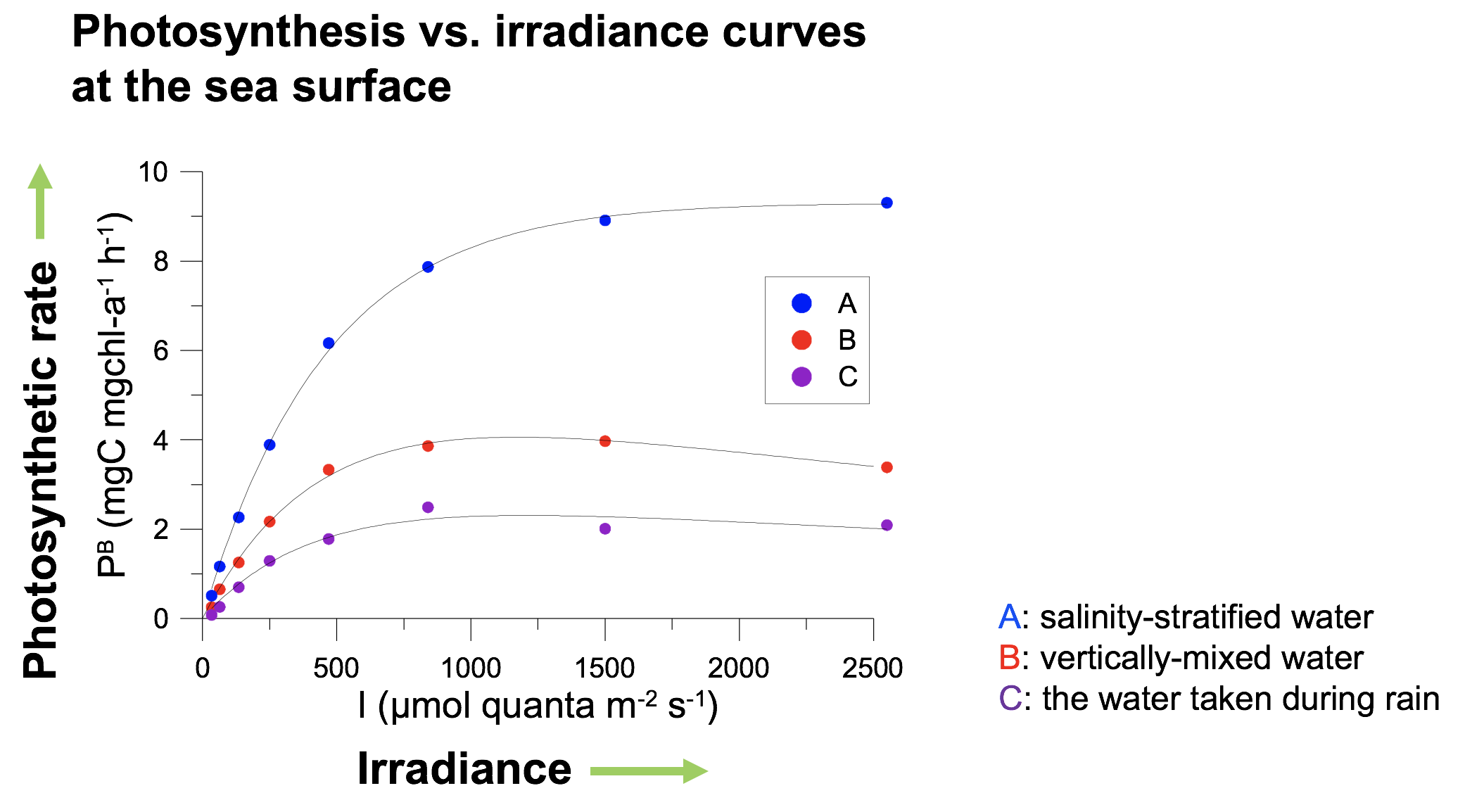Cruise observation in FY2017
1. Western Pacific Subtropical region
(1)R/V BlueFin (2017/7/13-7/18)
Recovery and redeployment of NOAA KEO buoy (Study of Nutrient supply mechanism)
(2)R/V Hakuho-maru (KH1-17-05: 2017/11/14-11/30)
Recovery and redeployment of sediment trap mooring system (Study of Nutrient supply mechanism)
(3)R/V Yokosuka (YK17-E01: 2017/12/17-12/25)
Emergency recovery and redeployment of “adrift” NOAA KEO buoy (Study of Nutrient supply mechanism)
(https://ebcrpa.jamstec.go.jp/rcgc/j/topics/index.html#20180219honda)
2. Japan Sea
(1)R/V Nagasaki-maru (# 458:2017/5/16-5/19)
Primary productivity observation (Global warming impacts on biogeochemical change in the Japan Sea)
(2)R/V Oshoro-maru (C040-Leg.1: 2017/6/5-6/10)
Primary productivity observation (Global warming impacts on biogeochemical change in the Japan Sea)
3. East Indian Ocean tropical region
(1)R/V Mirai(MR17-08-Leg.1: 2017/11/21-2018/1/4)
Primary productivity observation (Study of Air-Sea Interaction in the East Indian Ocean Upwelling region)
Topics
(1)Nutrient Supply Mechanism in the western Pacific Subtropical region
The Western Pacific Subtropical region is oligotrophic and is called “Ocean desert”. However a recent paper (Honda et al. 2017) reported that the primary productivity in this region is comparable to or slightly higher than that in the subarctic eutrophic region. In order to study the nutrient supply mechanism to support primary productivity, time-series observation with sediment trap was initiated in 2014 at station KEO, where is the Western Pacific subtropical time-series station of NOAA and surface buoy mooring equipped with meteorological / physical oceanographic sensors has been deployed. Based on past observation and model study, the followings are strong candidates as nutrient supply mechanism.
a. Mesoscale Eddy:Pass of Cyclonic eddy and Increase of sinking particles

b. Typhoon:Occurrence of Near-inertial internal wave and Turbulent flux

(Honda et al. submitted to PEPPS)
(2)Changes of primary productivity by rain in the eastern equatorial Indian Ocean
The eastern equatorial Indian Ocean is an oligotrophic ocean, but it is also one of the most rainy region in the Ocean. In order to investigate the effects for marine ecosystems by rain, the experiments of primary productivity were conducted in December 2017 onboard MIRAI in this region. Primary productivity largely fluctuated due to the changes of water mass structure and the wet deposition of aerosol via rain. This is suggesting that marine ecosystems are influenced directly by aerosol.

(3)Impact of dust deposition on phytoplankton biomass in the Bay of Bengal
Enormous flux of freshwater from the Ganges-Brahmaputra River supplies nutrients for phytoplankton in the Bay of Bengal (BoB) coastal region, but inhibits nutrient supply from deep layer in the offshore region due to a barrier layer formation. Dust deposition (DD) may thus be a potential source of nutrients. Modeled DD and satellite data were analyzed to see possible impacts of DD and/or of nutrient-rich subsurface water on the BoB phytoplankton biomass (Chl-a).

To assess contribution of nutrients from DD and deep ocean layer to Chl-a, a multiple linear regression [i.e., Chl-a as a function of DD and sea surface temperature (SST)] was conducted. Partial regression coefficients for DD (βDD) and SST (βSST) are shown in (c) and (d), respectively.
Inferred from significant βSST (blue area in d) nutrient flux from deep layer was likely important in the tropical region and western area of the BoB. The DD was likely important nutrient source for phytoplankton in the central area of the BoB (areas with significant βDD in c).